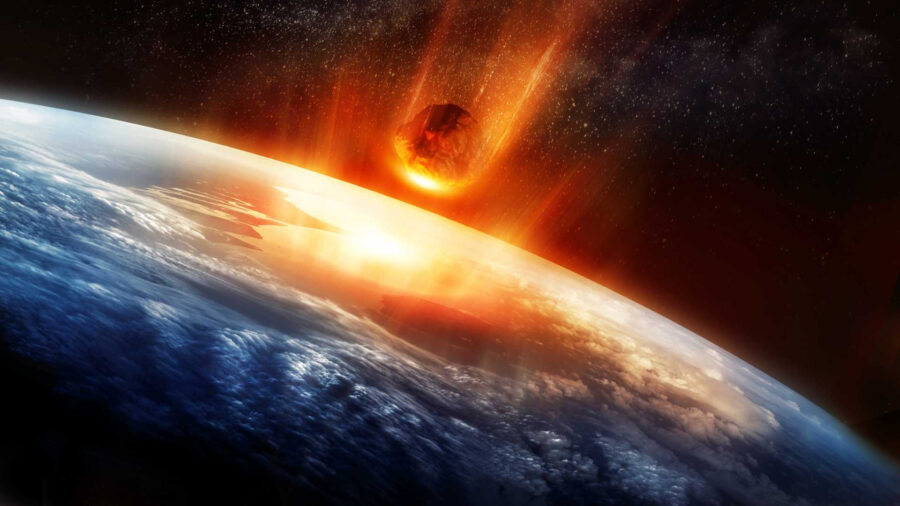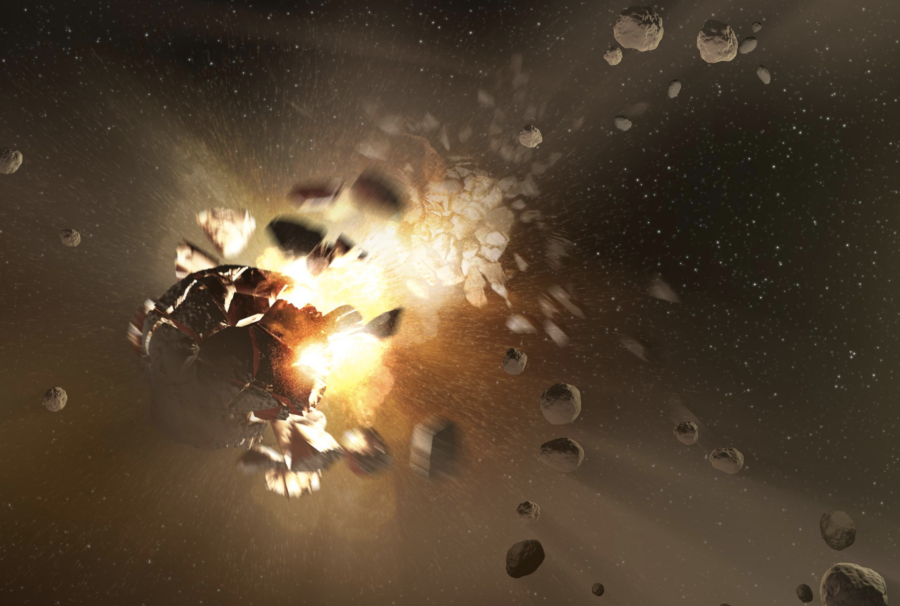Scientists Puzzled By Meteorite That Crash Landed On Earth

Scientists studying a 1.4-pound meteorite found in Morocco several years ago say the object appears to be of terrestrial origin. In basic terms, that means the rock made a successful roundtrip journey from Earth into space and back, like to a cosmic paddle ball with gravity acting as the elastic that eventually returned it to Earth.
Scientists discovered a meteorite that landed on Earth long ago, made its way back into space, and recently crashed back to Earth once again.
According to a recent presentation in Lyon, France, scientists believe the meteorite was propelled into space approximately 10,000 years ago when an asteroid struck Earth at tremendous speed. The theory posits that the rock eventually re-entered our planet after spending anywhere from 2,000 to tens of thousands of years in space.
As reported by The Byte, the research team is currently in the process of verifying their hypothesis using various testing methods. The meteorite caught the attention of researchers due to early tests revealing that it is composed of the same substance as volcanic rock found on Earth. Additionally, the rock exhibits isotopes of elements suggesting exposure to cosmic rays.

It also features a fusion crust, a shiny surface developed when a rock hurtles through Earth’s atmosphere before hitting the ground. Retired French professor Albert Jambon from Sorbonne University in Paris acquired the meteorite, known as NWA 13188, in 2018 from a Moroccan dealer at a gem and mineral show.
Jambon believes that nomadic tribal people in the Sahara may have discovered the rock in the past, further deepening the mystery surrounding when the meteorite returned to Earth. Jambon enlisted the expertise of Jerome Gattaccecam, the scientist who presented the findings in Lyon. Gattaccecam is a researcher at the French National Centre for Scientific Research and Aix-Marseille University.
The meteorite caught the attention of researchers due to early tests revealing that it is composed of the same substance as volcanic rock found on Earth.
“I purchased this one just because it was odd,” Jambon said of the meteorite. “Nobody knows what this stone is really worth.” However, the team’s initial examination of the space rock has not fully convinced other geologists, as the current findings are not unequivocal enough to establish with certainty that the rock originated on Earth.
“I think there is no doubt that this is a meteorite. It is just a matter of debate if it is really from Earth,” Frank Brenker, a Geology Professor at Germany’s Goethe University in Frankfurt, said of the find. Similarly, Ludovic Ferrière, a rock curator at the Natural History Museum Vienna in Austria, said the intriguing rock warrants further investigations before asserting any extraordinary claims.
Jambon believes that nomadic tribal people in the Sahara may have discovered the rock in the past, further deepening the mystery surrounding when the meteorite returned to Earth.
Gattacceca’s team has yet to determine the precise age of the meteorite, which is a crucial factor in establishing its origin. The rock has been classified as an ungrouped achondrite, a type of meteorite thats usually 4.5 billion years – just like the solar system. However, if NWA 13188 is indeed an Earth rock, it must be significantly younger.
Another significant challenge is the absence of a sufficiently recent large impact crater on Earth that aligns with the proposed timeline of the meteorite’s return. Based on Gattacceca and his colleagues’ estimations, a crater approximately 12.4 miles (20 km) wide would have formed if a 0.6-mile (1 km) wide asteroid struck Earth just 10,000 years ago.
However, among the 50 (of 200) known impact craters on Earth that correspond with the required size, none are younger than millions of years. While the Sahara, where the meteorite was discovered, houses 12 craters, only one measures 11.1 miles (18 km) wide and is at least 120 million years old, according to the Earth Impact Database, which catalogs confirmed impact craters on Earth












